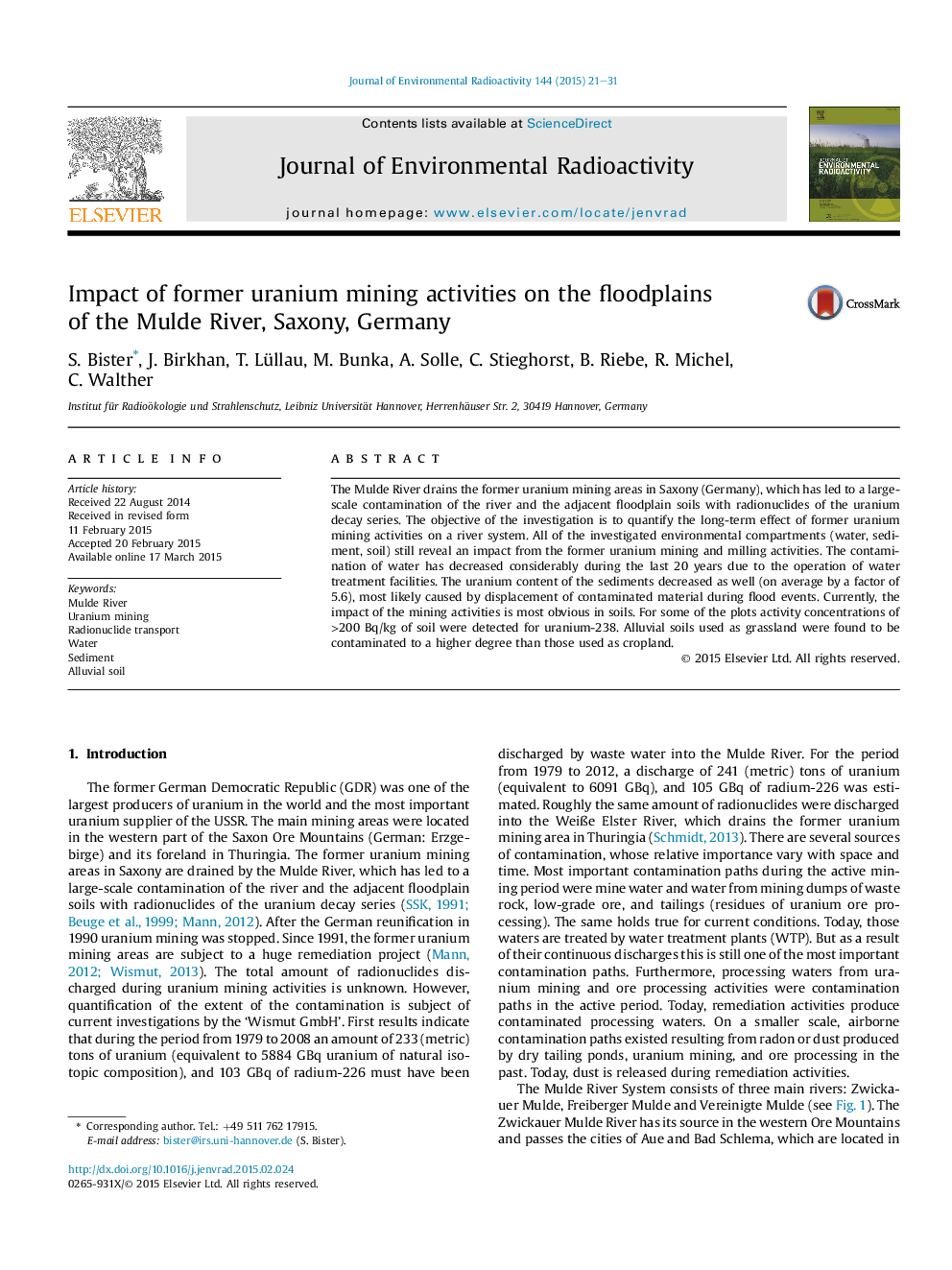| Article ID | Journal | Published Year | Pages | File Type |
|---|---|---|---|---|
| 1737909 | Journal of Environmental Radioactivity | 2015 | 11 Pages |
•Water, sediments, and soils affected by uranium mining were investigated.•All environmental compartments still reveal an impact of former uranium mining.•Contamination of water and sediment has decreased over the past 20 years.•Alluvial soils under pasture are higher contaminated than those from cropland.
The Mulde River drains the former uranium mining areas in Saxony (Germany), which has led to a large-scale contamination of the river and the adjacent floodplain soils with radionuclides of the uranium decay series. The objective of the investigation is to quantify the long-term effect of former uranium mining activities on a river system. All of the investigated environmental compartments (water, sediment, soil) still reveal an impact from the former uranium mining and milling activities. The contamination of water has decreased considerably during the last 20 years due to the operation of water treatment facilities. The uranium content of the sediments decreased as well (on average by a factor of 5.6), most likely caused by displacement of contaminated material during flood events. Currently, the impact of the mining activities is most obvious in soils. For some of the plots activity concentrations of >200 Bq/kg of soil were detected for uranium-238. Alluvial soils used as grassland were found to be contaminated to a higher degree than those used as cropland.
